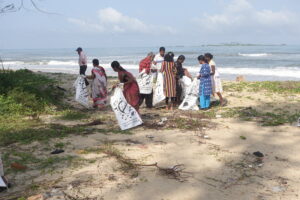Livestock is currently responsible for 30% of global greenhouse gases, two-thirds of which come from meat and milk production.
Hilda is the first to be born in the Langhill cow herd. Located in southern Scotland, the cow has been born through IVF and specifically bred to produce less methane.
Three technologies have been used to create Hilda, including systems that can predict an individual cow’s methane production based on DNA. Eggs were also extracted for fertilisation at a younger age with semen pre-sorted for sex.
‘You mix those three [technologies] together, and that enables you to accelerate female selection for reduced methane, one calf at a time,’ said Mike Coffey at Scotland’s sustainability-focused Rural College, who explained repeating this process would eventually lead to a low methane herd.
Traditional selection of cows for dairy and meat based on these traits has brought emissions down by around 1% annually. It is believed that by adopting this tech-enabled approach the methane output of a herd would plummet by 30% over the next two decades.
Unfortunately, economics present a barrier. Today, the cost of producing Hilda is around double the economic value of the animal itself. This means government intervention could be needed to make the approach cost effective, in the same way EVs have become established through policy levers – with growth of low methane livestock likely to come at a similar pace.
‘Most other countries in the world are doing the same thing. It’s like an international race to reduce methane emissions from ruminants as fast as practically possible,’ added Coffey.
More on pollution:

















